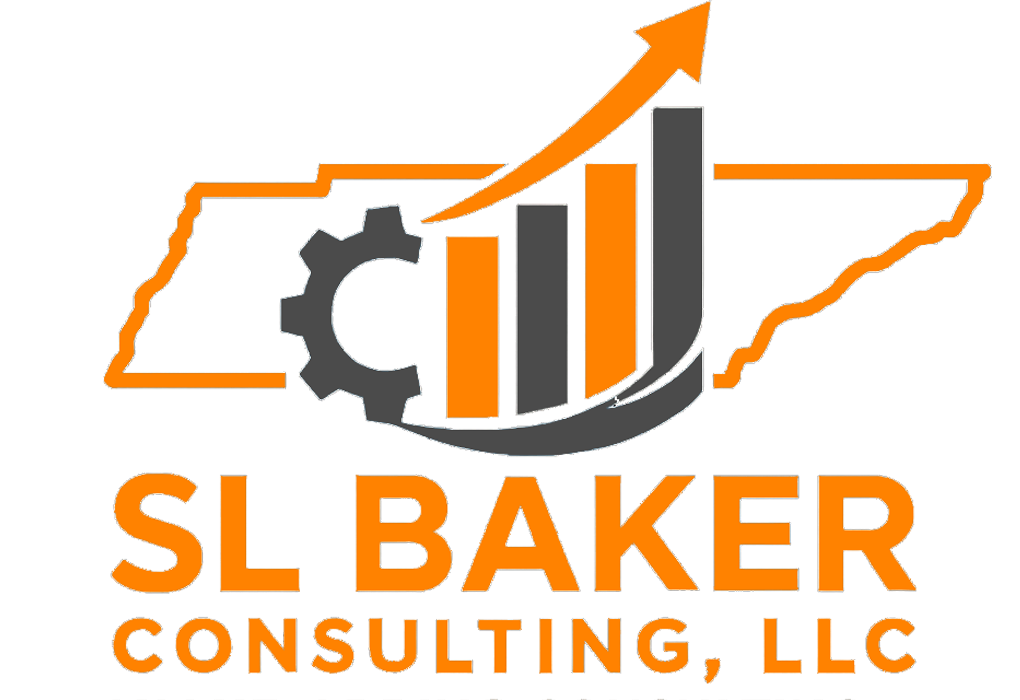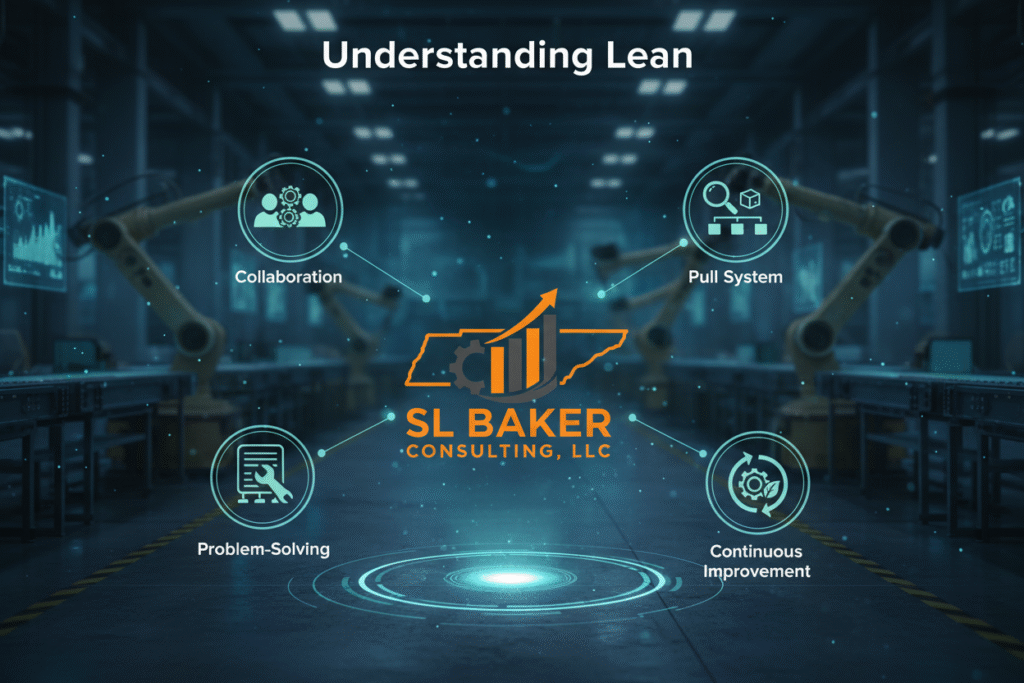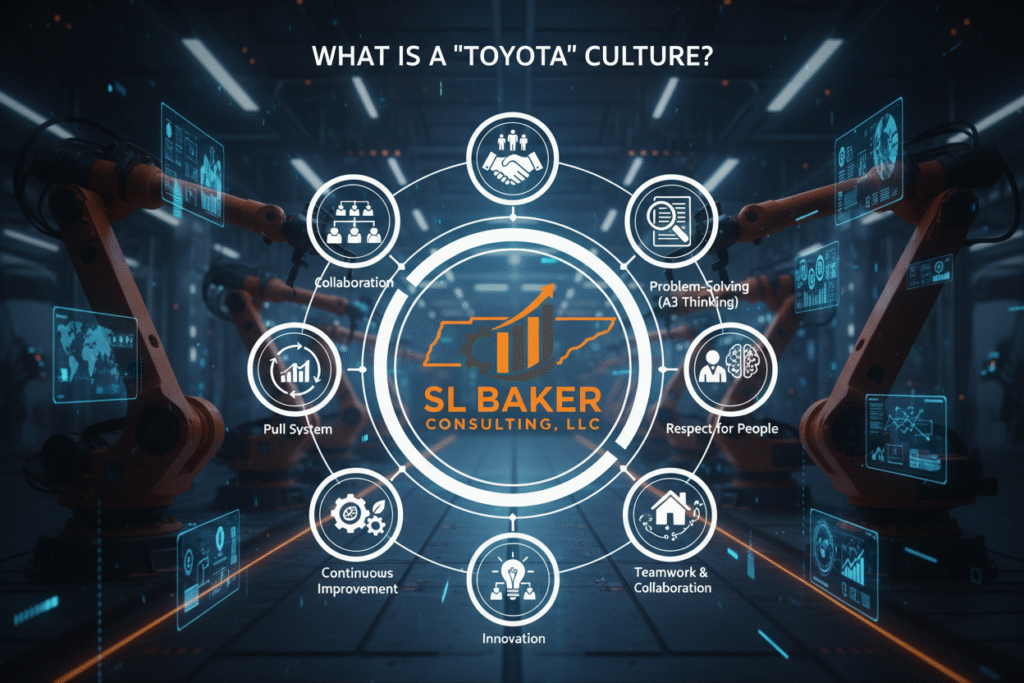Lean manufacturing has been heralded as a revolutionary approach that can transform operations, enhance productivity, and reduce waste and deservedly so. However, despite its proven benefits and widespread adoption, many Lean implementations in manufacturing plants fail to achieve their intended outcomes or are not sustained. A primary reason for these failures is the absence of a “Toyota Culture” or “Toyota Mindset,” which is crucial for sustaining Lean principles effectively. This article delves into the reasons behind the failure of Lean implementations, emphasizing the need for a supportive culture that empowers shop floor operators and fosters a problem-solving environment.
Understanding Lean Manufacturing
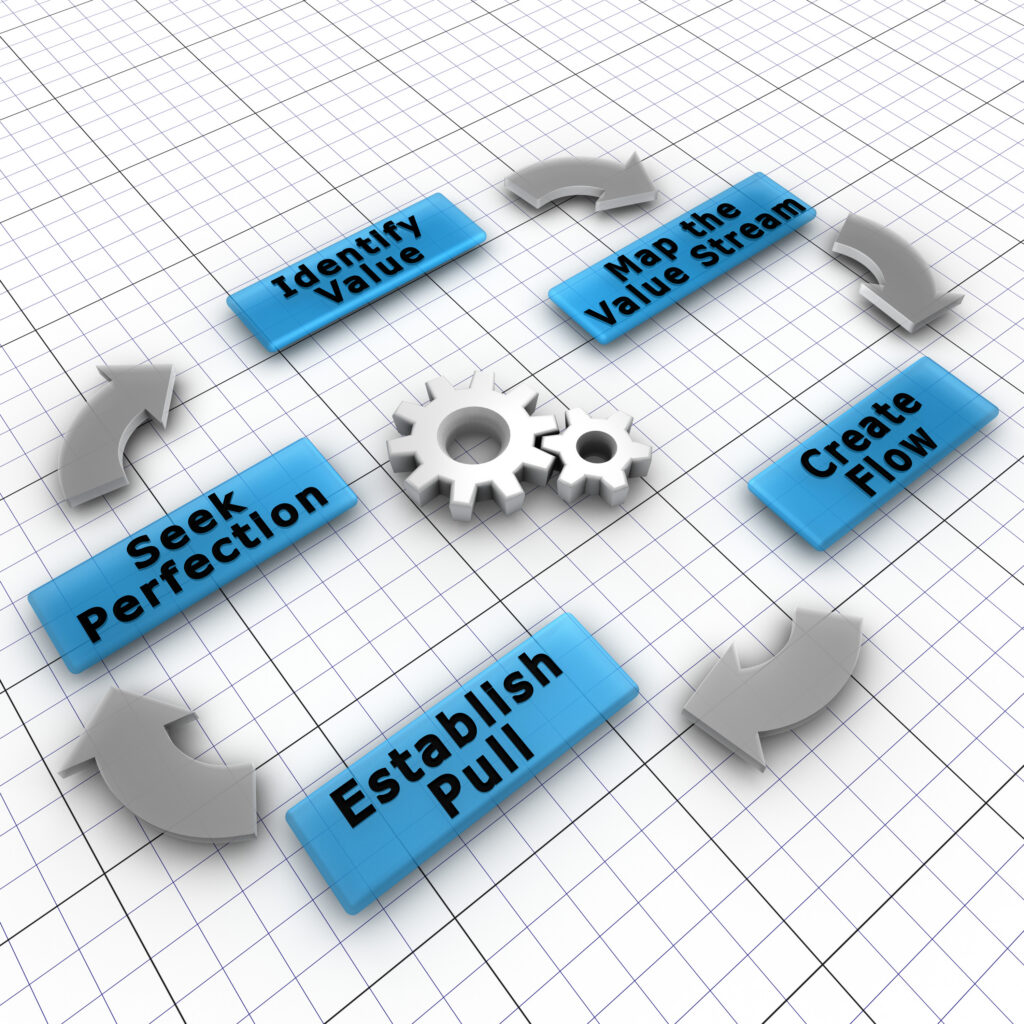
Lean manufacturing, first and foremost is a culture, where people aim to minimizing waste while increasing productivity. Originating from the Toyota Production System (TPS), Lean focuses on creating value for the customer while reducing costs. The core principles of Lean include:
- Value Definition: Understanding what constitutes value from the customer’s perspective.
- Understanding the Value Stream: Identifying all steps in the value stream and eliminating those that do not add value.
- Flow: Ensuring that products move smoothly through the production process without stops and starts.
- Pull: Producing only what is needed when it is needed starting from the customer’s side of the process and then replenishing the process down the stream as the customer pulls product, thus reducing inventory.
- Perfection: Continuously improving processes to enhance quality and efficiency.
While these principles provide a clear framework for Lean implementation, the real power of Lean lies not in the tools themselves but in the culture that supports them.
The Importance of Culture in Lean Implementation
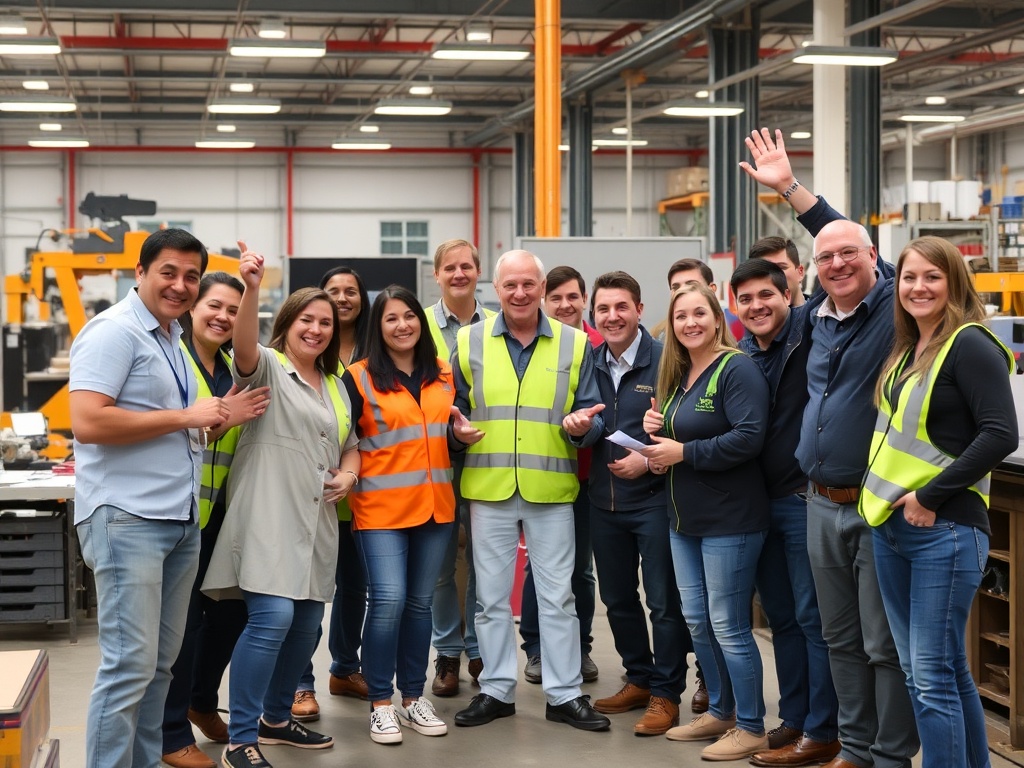
The Toyota Mindset
The success of Lean manufacturing at Toyota can largely be attributed to its unique organizational culture, I refer to it as the “Toyota Mindset.” This culture emphasizes respect for people, continuous improvement (Kaizen), and a commitment to long-term success over short-term gains. The Toyota Mindset permeates the organization, affecting every level from the CEO to the shop floor operator.
- Respect for People: At Toyota, the belief is that the people who perform the work are the best equipped to identify problems, propose solutions and make decisions. Employees are valued not just for their labor but for their insights and creativity.
- Empowerment: Decision-making authority is pushed down to the shop floor, allowing operators to take ownership of their work. This empowerment fosters a sense of responsibility and accountability.
- Problem-Solving: A strong focus on problem-solving is ingrained in the culture. Employees are encouraged to identify issues, propose solutions and experiment with new ideas through the A3 PDCA process.
- Continuous Improvement (Kaizen): The commitment to ongoing improvement is a core tenet of the Toyota Mindset. Employees at all levels are trained to think critically about their work and seek ways to enhance processes. This also shows the respect for the employee.

The Disconnect in Many Manufacturing Plants
In many manufacturing plants attempting Lean implementations, there is often a significant disconnect between the ideals of Lean and the prevailing culture. This disconnect can manifest in several ways:
- Lack of Leadership Involvement: Lean manufacturing requires Top Leadership to change first. If the CEO and the President do not have hands-on involvement, there will be no buy-in from the lower levels of the company or sustainment in the future. Leaders must teach all levels of the company that their jobs are to support the operators on the shop floor and make them successful.
- Focus on Tools Over Culture: Many organizations mistakenly prioritize Lean tools (such as 5S, Kaizen events, and Kanban) over the foundational cultural changes necessary for sustainable success. While tools are important, they are ineffective without a supportive culture.
- Lack of Training and Support: Employees are often not adequately trained in Lean principles or problem-solving techniques. Without the necessary skills and knowledge, they cannot fully engage in Lean practices.
- Fear of Failure: In cultures where mistakes are punished, employees may be reluctant to experiment or suggest improvements. This fear stifles innovation and hinders progress.
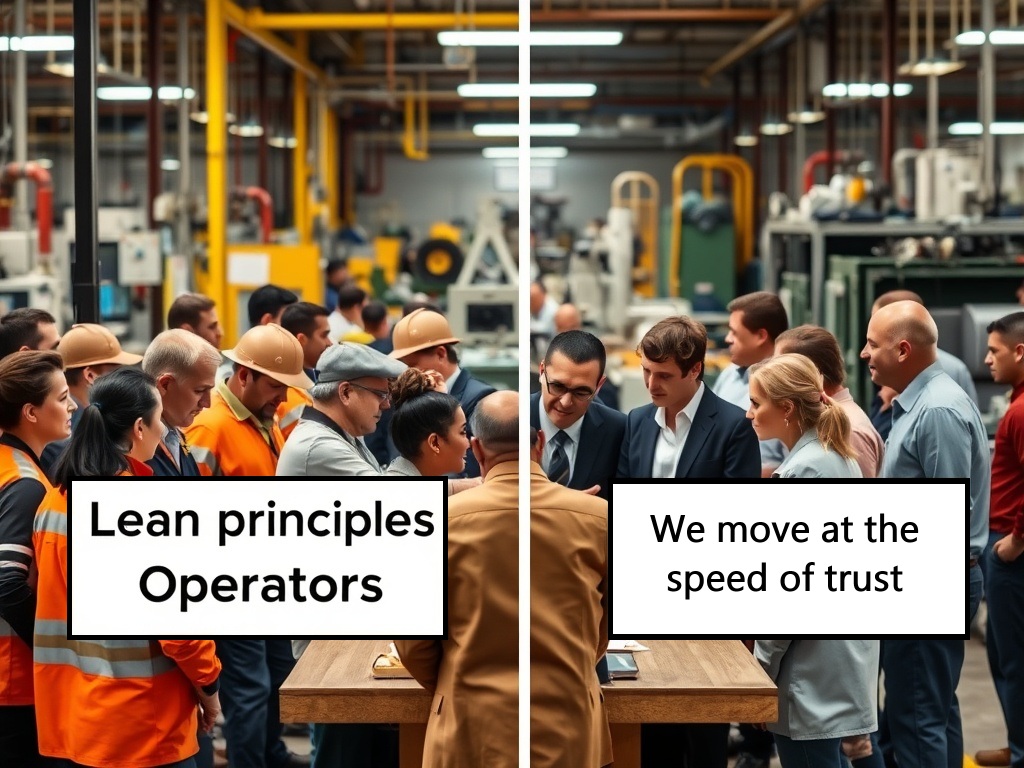
The Role of Leadership in Fostering a Lean Culture
Effective leadership is critical in creating and sustaining a Lean culture. Leaders at all levels must embody and promote the Toyota Mindset. Here are key actions leaders can take to support Lean implementation:
- Lead by Example
Leaders must model the behaviors they wish to see in their employees. This includes demonstrating a commitment to continuous improvement, actively participating in problem-solving, and showing respect for the insights of shop floor operators. Continuous improvement is a learning process. There will be some failures and not every idea is a home run. Don’t put a price tag on the process. Invest in the learning.
- Communicate a Clear Vision
A compelling vision for Lean implementation should be communicated throughout the organization. Leaders must articulate the benefits of Lean, not just for the company but for employees as well. This helps to build buy-in and aligns everyone towards common goals. Be sure to align you annual evaluations and rewards around the behaviors you are looking for.
- Invest in Training and Development
Training is essential for equipping employees with the skills needed to excel in a Lean environment. Organizations should invest in comprehensive training programs that cover Lean principles, problem-solving techniques, and the tools of Lean. Build an internal coaching infrastructure that will last by training top down. Not a department, but the normal supervisor employee relationship.
- Encourage Employee Involvement
Leaders should actively encourage employee involvement in Lean initiatives. This can be achieved through regular meetings and recognition of employees who contribute to improvement efforts.
- Create a Safe Environment for Experimentation
To foster a culture of innovation, leaders must create a safe environment where employees feel comfortable experimenting and making mistakes. This involves shifting the focus from blame to learning.

Supporting Shop Floor Operators
At the heart of Lean manufacturing is the shop floor operator. These individuals are the ones who interact directly with the processes and products, making their involvement crucial for Lean success. Here’s how organizations can support shop floor operators in a Lean environment:
- Empower Decision-Making
Operators should be given the authority to make decisions about their work. This includes the ability to stop the production line if they identify a problem. Empowerment fosters ownership and encourages operators to take pride in their work. They also have to be able to SEE and UNDERSTAND the data to make good decisions. The Harada Method will help in preparing your employees.
- Provide Tools and Resources
While Lean tools should not be the primary focus, providing operators with the necessary tools and resources is essential for their success. This includes access to information, equipment, and support when they encounter challenges.
- Encourage Collaboration
Lean thrives on teamwork and collaboration. Operators should be encouraged to work together, share ideas, and support one another in problem-solving efforts. Cross-functional teams can also be formed to tackle broader challenges.
- Recognize and Celebrate Contributions
Recognizing the contributions of shop floor operators is vital for maintaining motivation and engagement. Celebrating successes, both big and small, helps to reinforce the importance of Lean principles and encourages continued participation.

Training and Development: Building Problem-Solving Skills
A critical component of Lean implementation is training employees in problem-solving techniques. Here’s how organizations can effectively develop these skills:
- Teach A3 PDCA Root Cause Analysis
Employees should be trained in root cause analysis techniques, such as the “5 Whys” or Fishbone diagrams. This empowers them to identify the underlying causes of problems rather than just addressing symptoms. During this process employees will experiment with ideas and learn what works and what doesn’t.
- Implement Continuous Improvement Teams
Organizations should establish continuous improvement teams that encourage employees to regularly identify and address inefficiencies.
- Facilitate Cross-Training
Cross-training employees in different roles and functions enhances their understanding of the overall process and encourages collaboration. This also allows for greater flexibility in addressing issues as they arise.
- Provide Ongoing Support and Coaching
Training should not be a one-time event. Organizations should provide ongoing support and coaching to reinforce learning and encourage the application of problem-solving techniques in real-world situations.
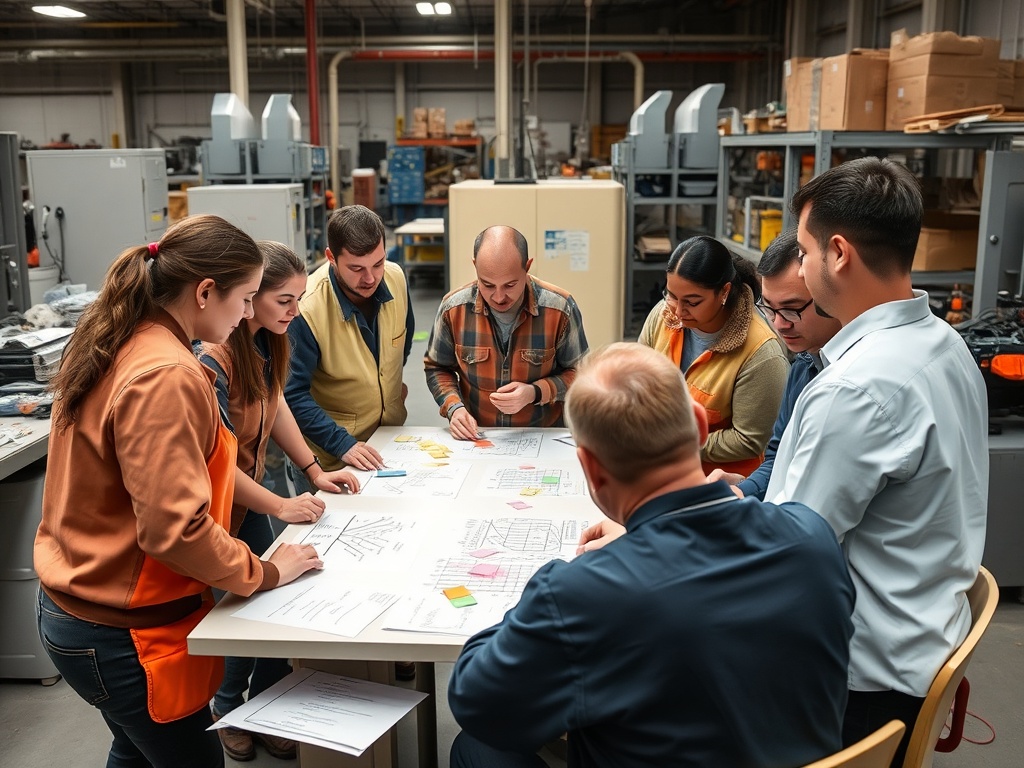
The Dangers of Misaligned Incentives
Another common pitfall in Lean implementations is the presence of misaligned incentives. When reward systems do not align with Lean principles, they can undermine efforts for continuous improvement. Here’s how to ensure that incentives support Lean culture:
- Align Rewards with Team Performance
Instead of rewarding individual performance in isolation, organizations should consider team-based rewards that promote collaboration and collective problem-solving.
- Recognize Improvement Efforts
Incentives should recognize not only outcomes but also the efforts and behaviors that contribute to improvement. This encourages a culture of learning and experimentation.
- Avoid Short-Term Focus
Reward systems should discourage short-term thinking that prioritizes immediate results over long-term sustainability. This can be accomplished by linking incentives to long-term performance metrics.
- Make Sure Existing Evaluations and Bonuses Match New Lean Objectives
Be sure to go back and review the existing methods of evaluation of employees and see that they are not being told to have two different behaviors. Make sure bonuses align with new Lean processes.

Conclusion
The failure of Lean implementations in manufacturing plants is often rooted in a lack of a supportive culture and the absence of a “Toyota Mindset.” For Lean to be successful, organizations must prioritize cultural transformation that empowers shop floor operators, fosters problem-solving, and encourages continuous improvement.
Leaders play a critical role in this transformation by modeling desired behaviors, communicating a clear vision, and investing in training and development. By supporting shop floor operators and aligning incentives with Lean principles, organizations can create an environment where Lean practices thrive.
Ultimately, Lean is not just about the tools; it is about creating a culture that values people and empowers them to contribute to the organization’s success. By embracing this philosophy, manufacturers can unlock the full potential of Lean practices and achieve sustainable operational excellence.
